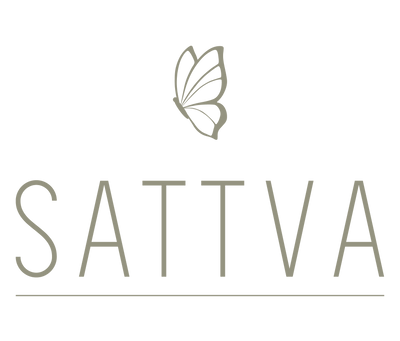

Halifax boutique commits to eco-conscious clothing
CYNTHIA MCMURRAY
When it comes to eco-conscious shopping, we are trained to look at food labels, the ingredients in beauty products, even BPA-free plastics, but that same thinking doesn’t always translate to what we wear. Eco-friendly clothing, however, is something to consider.
“There was a big gap in conscious consumerism and my morals as a shopper, so I wanted to find a way to carry this through to clothing . . . ” says Sarah Bannerman Andrews, owner of Sattva Boutique in Halifax.
“I care a lot about clothes and how they make me feel, but there were not a lot of (eco-friendly) options,” she adds, saying that is what inspired her to open the store on Agricola Street.
While she developed the concept in 2015 and brought it to life through pop-up shops, the bricks and mortar boutique made its debut in 2016. The name for the store came from the Sanskrit word ‘sattva,’ meaning an intangible experience of wholeness, balance and truth, according to Andrews. “It’s a state of mind that feels light, clear, connected and content,” she adds, which is how she wants people to feel when they leave the store.
And when you walk through the front door, it does have a homey feeling, which she attributes in part to her staff that makes everyone feel welcome, but also because the store was once an actual house she renovated to accommodate the boutique.
“A lot of our customers don’t like the mall; it is overwhelming and feels empty to them, and when they visit our store, it doesn’t feel empty. It feels like there are actual people involved, not just a big corporation,” says Andrews.
But what really sets Sattva apart from other clothing retailers is that each piece in the store is guaranteed to meet at least one of four commitments Andrews makes to her customers. Every product is ethically made, traded fairly and made safely, locally sourced and/or the manufacturer or designer is socially aware of how they also affect others and the environment. While 95 per cent of the products in Sattva are Canadian-made, if they do have to source overseas for anything, Andrews says she ensures the manufacturer abides by the same standards she sets for other producers.
Miik, a husband and wife design team known for their Canadian-made bamboo fabrics, is one of these producers. “They consider the environment in every step of the process, never comprising style, function or comfort. They manufacture their products in a closed-loop system, so all toxins produced are captured and filtered before going back into the environment,” says Andrews.
Being eco-conscious doesn’t have to mean sacrificing style or quality, which is often the perception. Today, beautiful fabrics are made from things like corn, coconut husks, stinging nettle, pineapple, hemp, beechwood, recycled plastic bottles and eucalyptus, among a variety of other eco-friendly materials. Leading designers are stepping up and taking note of the general call for more sustainable manufacturing processes and the result is not only unique, modern-looking fashions, but clothing that is durable while making a positive impact on people and the environment.
While Andrews opened Sattva with eco-consciousness in mind, she says it is not about pushing her agenda on others.
“It (eco-consciousness) can be practised on a large or small scale. Even a tiny scale can be helpful. We certainly don’t take a dogmatic . . . all or nothing approach,” she says. “We don’t want to overbearingly push the eco concept on people. We just want people to be more aware and know they have options. When you walk into our store, you wouldn’t know it is an eco-conscious store. It is modern and looks like any other clothes boutique.”
As one might expect, eco-friendly clothes are not cheap, although the cost is relative when you consider the garments are typically meant to last and are superior in workmanship and quality to most mass-produced clothes.
“We don’t inflate our prices ... I try to offer pieces people can really wear, not pieces that hang in their closet, which makes me feel good. So, you won’t find the giant sway you do in price in the normal retail market where something starts out at $300 and ends up selling for $50 because it was overpriced from the start. We just try to keep the prices constant,” says Andrews.
While Sattva may not be for everyone, she says, “If nothing more, we are starting a conversation, raising awareness — very suggestively and kindly popping into people’s brains that it [eco-consciousness] is an actual thing
. . . and the world can move toward more sustainable manufacturing of wearable items.”





